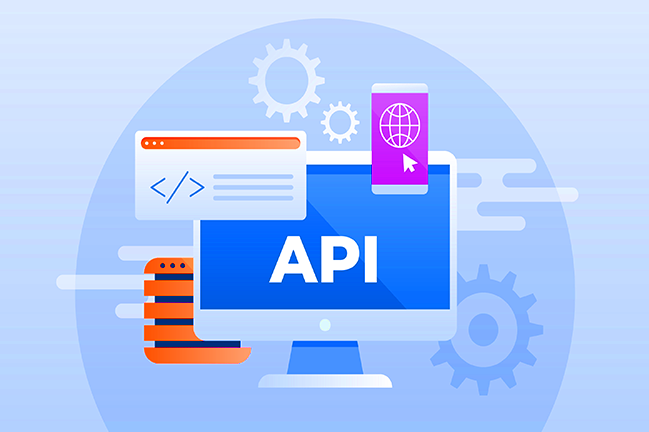
Asynchronous API: The Key to Scalability and Performance
Imagine you’re running an e-commerce website, and a customer wants to check their order status. With a synchronous API, the customer would have to wait for the server to check the status of their order before receiving a response. But with an asynchronous API, the customer’s request is sent to the server, and they can continue browsing the website while the server processes their request. As a result, the customer experience is much more efficient and seamless.
With an astonishing 26.5% increase in usage among developers in 2022, Async APIs have quickly become the go-to data management choice. The beauty of async communication lies in its ability to process multiple requests simultaneously without waiting for a response — this allows various applications to communicate more efficiently, leading to better performance and response time.
Let’s delve into more details regarding Async APIs, how they work, and their use cases.
What is an Asynchronous API?
Asynchronous API, also known as non-blocking, event-driven API, or Async API, is an application programming interface that allows you to send many queries concurrently and intelligently manage the connections between services without waiting for a response.
An example of an asynchronous API is a chat application. In a chat application, multiple users can send and receive messages together without waiting for a response from the server. Async APIs are well-suited for this type of application because they can handle multiple requests simultaneously, providing a more responsive and seamless user experience while chatting.
Difference Between Asynchronous and Synchronous APIs
Synchronous and asynchronous APIs differ in processing requests and handling responses.

Synchronous APIs, also known as blocking APIs, involve a request-response communication pattern where the client sends a request, waits for the server’s response, and cannot continue its execution until it receives a response. On the other hand, asynchronous APIs do not wait for the server’s response to continue its execution. Instead, the client can move on to other tasks while it waits for the server’s response.
An example of Synchronous APIs would be a typical web page request, where a client sends a request for a webpage, and a server sends back HTML, CSS, and JavaScript for the client to display the webpage. Hence, the client is dependent on receiving the information from the server before it can move on and display the webpage to a user.
An example of asynchronous APIs would be a chat application, where the client can send multiple messages without waiting for a response from the server.
Synchronous APIs typically use a thread or process for each client request, while asynchronous APIs often use an event loop and non-blocking I/O operations. Each request in synchronous APIs takes up a separate thread or process, which can lead to performance issues when handling a high number of requests. Asynchronous APIs, on the other hand, can take many requests with a single thread or process, making them more scalable and efficient.
How Do Async APIs Work?

Async APIs use an event-driven architecture, where an API triggers event(s) and process(es) requests when specific actions or conditions occur. For example, an event is triggered when a chat application receives a new message. To handle the response, async APIs often utilize callbacks or promises, which are functions that execute after a specific event or action has occurred.
When you make an asynchronous call, it returns with a token and a status URL, which you can use to check the progress of your request. Calling applications use the status URL to poll the server at convenient intervals until they receive a response that the asynchronous process is complete. You can then use the response URL to retrieve any relevant data.
Commonly Used Protocols for Async APIs
- WebSockets: WebSockets protocol allows for bidirectional communication between a client and a server. It is an excellent choice for real-time applications, such as online gaming or chat applications, as it allows instant updates and notifications.
- Server-Sent Events (SSE): Server-Sent Events is a simple protocol that allows a server to push updates to a client without the need for the client to poll the server for new data continuously. Typical examples of SSE are a stock ticker application that updates a user with the latest stock prices without needing to refresh the page or a social media feed that updates in real time with new posts.
- Long Polling: Using the long polling technique, a client sends a request and receives an immediate response along with a status URL. The client can poll the URL at regular intervals to know the status of the request processing. Once the status shows complete, the client can use the API results to read the processing response. Many weather applications use this technique to update the latest weather information.
- Callback URL: Using this technique, a client sends a request along with a callback URL. The server stores the callback URL, sends an immediate response back to the client, and starts processing the response. The client does not need to poll, but the server will notify the client of the callback given when the processing status is complete.
- Asynchronous Messaging: Asynchronous messaging is a technique where messages are sent and received through a message queue. This technique allows the decoupling of the sender and receiver and improves scalability. An example of this technique would be a retail e-commerce platform where an inventory system sends a message to an ordering system to update the stock levels without needing an ordering system to check an inventory system constantly.
- Webhooks: Webhooks are a way for an app to provide other applications/external services with real-time information. It allows one application to send a message to another when a specific event occurs. An example would be a payment gateway sending a notification to a merchant’s application when a customer’s payment is successful.
Use Cases for Asynchronous APIs
When it comes to asynchronous APIs, the possibilities are endless. You can use Async APIs across a wide range of industries and applications. The key is to understand the unique requirements of your business.
Here are some examples of how Async APIs can work in different industries and businesses:
- Online Gaming: Asynchronous APIs enable real-time interaction between players, allowing for an immersive gaming experience. In a fast-paced game, like a first-person shooter, the ability to process multiple player actions simultaneously is crucial for smooth and responsive gameplay.
- Social Media: Asynchronous APIs can handle a high volume of requests and updates on social media platforms, providing a seamless user experience. With asynchronous APIs, social media platforms can process multiple requests, allowing users to share and view content in real time.
- E-commerce: With asynchronous APIs, e-commerce websites can process multiple orders and inventory updates, providing a more responsive, updated, and seamless user experience to their customers.
- Internet of Things (IoT): Asynchronous APIs can handle the high volume of data generated by IoT devices, making them suitable for IoT applications such as smart home automation and connected cars. With asynchronous APIs, IoT devices can communicate and exchange data promptly, allowing for more efficient and effective automation.
- Financial Trading: Asynchronous APIs are used by financial trading platforms to process multiple updates concurrently for faster and more efficient decision-making in high-stakes financial markets.
Execute Asynchronous APIs with Just a Few Clicks
Astera offers a unified, code-free API lifecycle management solution with a visual interface, powerful inbuilt functionalities, and various automation features. Using our solution, you can execute any API asynchronously or synchronously with just a few clicks. The tool automatically manages the complex process of executing asynchronous APIs, including request, polling/ callback, and final response.
All you need to do is to define the deployment processing type at the bottom of the “API Configuration” Screen.

you select the processing type asynchronous and deploy an API, you can send asynchronous requests to trigger a flow. Astera API Management Solution will handle the response queuing based on the server load. You can easily monitor the status of the event. So, save time by executing asynchronous API requests. Try Astera API Management for yourself and experience the power of event-driven architecture. Download a free 14-day trial now!
 Astera AI Agent Builder - First Look Coming Soon!
Astera AI Agent Builder - First Look Coming Soon!


